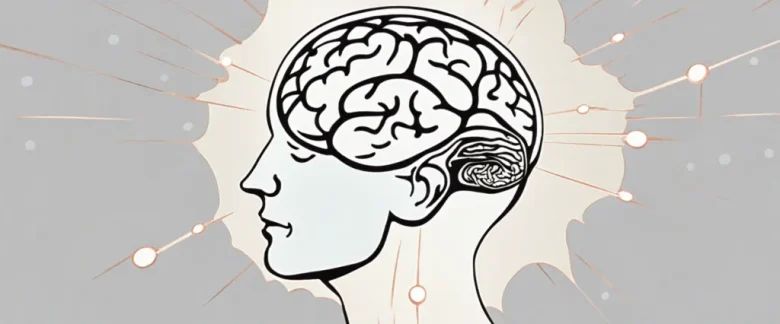In “The Theory of Moral Sentiments,” Adam Smith dissects human nature and explores the origins and principles of moral judgments. Published in 1759, Smith’s seminal work delves into the intricacies of human behavior and examines the role of sympathy and moral sentiments in guiding our ethical decision-making. A Scottish philosopher and economist, Adam Smith (1723-1790) is widely regarded as the father of modern economics, renowned for his influential work “The Wealth of Nations.” However, “The Theory of Moral Sentiments” offers a deeper insight into Smith’s philosophical musings, presenting a comprehensive examination of the foundations of morality and the dynamics of human interaction.
Chapter 1: The Nature of Sympathy: Understanding Human Empathy
Chapter 1 of The Theory of Moral Sentiments by Adam Smith, titled “The Nature of Sympathy: Understanding Human Empathy,” provides an insightful exploration into the origins and mechanisms of human sympathy or empathy. Smith argues that sympathy, the ability to share and understand the sentiments and emotions of others, is a fundamental aspect of human nature.
According to Smith, sympathy arises from our capacity to imagine ourselves in the situation of others and experience their emotions as if they were our own. He proposes that this ability is the result of both the natural propensity of humans to feel sympathy and our desire for approval from others. Smith suggests that when we witness someone in distress, we naturally feel an impulse to alleviate their suffering, driven by our own discomfort in witnessing their pain.
Furthermore, Smith suggests that our ability to sympathize is not limited to situations of distress. He claims that we can also feel joy, grief, anger, and other emotions in response to the emotions of those around us. He emphasizes the role of language in communication, as it allows us to share our sentiments more effectively and strengthen our capacity for sympathy.
Smith concludes the chapter by highlighting the significance of sympathy in fostering moral judgments and guiding our behavior. He believes that sympathy leads us to approve of virtuous actions and disapprove of morally reprehensible ones. In this way, sympathy serves as the foundation for moral judgments, shaping our sense of right and wrong.
Overall, Chapter 1 of The Theory of Moral Sentiments provides a comprehensive exploration of the nature of sympathy, highlighting its vital role in human interactions and moral decision-making.
Chapter 2: The Impartial Spectator: Moral Judgment and Perspective
Chapter 2 of Adam Smith’s “The Theory of Moral Sentiments” delves into the concept of the impartial spectator and the role it plays in shaping our moral judgments and perspectives. Smith argues that moral evaluation is not solely reliant on self-interest or individual preferences; rather, it takes into account the views of an imaginary impartial spectator.
Smith asserts that humans have an innate capacity for sympathy, which allows us to put ourselves in the shoes of others and understand their feelings and perspectives. This sympathy enables us to judge our own actions and those of others. The impartial spectator, as an imaginary entity, represents the collective judgment of society and helps us assess the morality of our actions.
According to Smith, the impartial spectator aids in moderating our passions and desires. It guides us toward actions that receive approval from society and discourages actions that result in blame or guilt. This spectator acts as an internal moral compass, influencing our conscience and shaping our moral character.
Moreover, Smith highlights the significance of self-reflection in moral judgment. By imagining the opinions of the impartial spectator, individuals can critically evaluate their own behavior and motivation. This introspection allows for a more comprehensive understanding of the consequences and implications of our actions.
In conclusion, the concept of the impartial spectator posits that our moral judgments and perspectives are influenced by an imaginary observer, representing the collective judgment of society. Through sympathy and self-reflection, this impartial spectator aids in evaluating the moral nature of our actions, guiding us toward virtuous behavior and fostering a moral society.
Chapter 3: The Role of Self-Interest: Balancing Individual and Social Good
Chapter 3 of Adam Smith’s book, The Theory of Moral Sentiments, delves into the role of self-interest in balancing individual and social good. Smith argues that although humans are naturally inclined towards self-interest, this does not necessarily lead to a completely self-centered society. Instead, individuals have a natural tendency to consider the perspectives and sentiments of others.
Smith begins by explaining that self-interest motivates individuals to seek their own happiness and well-being. This pursuit of self-interest can bring about prosperity and progress within a society by stimulating economic growth and innovation. However, Smith acknowledges that unchecked self-interest can also lead to negative consequences such as greed and exploitation.
To mitigate the potential harm caused by excessive self-interest, Smith argues that humans possess an innate sense of sympathy and the capacity to put themselves into the shoes of others. This sympathy encourages individuals to consider the impact of their actions on others and align their actions with societal norms and expectations.
Smith asserts that individuals are influenced by passions and emotions, making them receptive to the approval or disapproval of others. This desire for social approval leads individuals to become conscious of the sentiments of those around them and guides their behavior accordingly.
Ultimately, Smith concludes that self-interest and sympathy are not mutually exclusive but rather work in harmony. He suggests that individuals possess an internal moral compass that balances their pursuit of self-interest with the consideration of others. By cultivating sympathy and social awareness, individuals can align their self-interest with the broader welfare of society.
In summary, Chapter 3 of The Theory of Moral Sentiments explores how self-interest can be balanced with the promotion of social good through the innate human qualities of sympathy and social awareness. Smith argues that individuals possess the capacity to act in their own self-interest while considering and accommodating the sentiments and interests of others.
Chapter 4: Moral Approbation and Disapprobation: Evaluating Virtuous Behavior

In Chapter 4 of “The Theory of Moral Sentiments,” Adam Smith explores the concept of moral approbation and disapprobation. He begins by emphasizing the importance of understanding how individuals evaluate and judge the virtues and vices of human behavior.
Smith argues that moral sentiments are shaped by our inherent ability to sympathize and empathize with others. When we observe virtuous actions, such as generosity or bravery, we experience a moral approbation, which refers to the approval or praise we feel towards these behaviors. On the other hand, when we encounter vices like cruelty or dishonesty, moral disapprobation arises, causing us to condemn and reproach such actions.
According to Smith, our moral sentiments are not only influenced by our capacity for sympathy but are also shaped by societal norms and expectations. We tend to align our judgments with the collective opinion of the community we belong to. As a result, our sentiments become more refined and consistent through social interactions and shared moral standards.
Smith further suggests that moral judgments are not solely based on the consequences of an action, but also on the intentions and motives behind it. He argues that virtuous behavior is characterized by acting in accordance with the morally approved qualities, such as prudence, self-command, and benevolence. Conversely, vices are exhibited when individuals act out of selfishness, deceit, or other morally disapproved traits.
Overall, Smith’s Chapter 4 delves into the evaluation of virtuous behavior through moral approbation and disapprobation. It emphasizes the role of sympathy, societal norms, and intentions in shaping our moral sentiments, allowing for a better understanding of the moral judgments we make as individuals and as part of a community.
Chapter 5: The Effects of Society: Socialization and Moral Development
Chapter 5 of “The Theory of Moral Sentiments” by Adam Smith explores the impact of society on an individual’s moral development through the process of socialization. Smith argues that humans possess a natural tendency to seek approval and sympathy from others, and this desire shapes their moral values and behavior.
According to Smith, individuals are driven by a sense of propriety and the desire to be perceived favorably by others. This desire for social approval leads individuals to conform to societal norms and values. Smith explains that this process starts in childhood, as children learn to imitate the actions and behaviors of their parents and peers. Through various social interactions, individuals internalize social norms, which shape their understanding of right and wrong.
The author contends that moral judgments are not solely based on reason, but also on the sentiments and emotions we feel in social situations. Smith suggests that our moral judgments are often influenced by the extent to which we can relate to the emotions of others. He asserts that the ability to sympathize with others plays a crucial role in moral development, as it allows individuals to understand the perspectives of those around them.
Furthermore, society’s influence on moral development is not limited to the individual level. Smith argues that societal institutions, such as laws and customs, play a significant role in shaping the moral compass of individuals. These institutions establish a framework within which people develop their moral values and behaviors.
In conclusion, chapter 5 explores the profound impact of socialization on an individual’s moral development. Smith posits that society shapes our moral values and behavior through social interactions, empathy, and conformity to societal norms. Thus, society plays a crucial role in shaping individuals’ ability to judge and act morally.
Chapter 6: The Importance of Justice: Fairness and Equity
Chapter 6 of “The Theory of Moral Sentiments” by Adam Smith explores the concept of justice and its crucial role in society. Smith argues that justice is a fundamental virtue that establishes fairness and equity among individuals, and its importance lies in promoting harmony and cooperation.
According to Smith, human nature inherently desires justice and draws satisfaction from treating others fairly. He highlights that when we observe unfairness, even if it benefits ourselves, we experience discomfort and sympathize with the victims. This sentiment is a manifestation of our innate moral sense.
Smith further delves into the various aspects of justice, including distributive justice, which concerns the fair allocation of resources and rewards. He suggests that a society that upholds distributive justice ensures that individuals receive their due proportion based on their merit and personal contribution to society. This promotes social harmony and prevents envy and resentment.
Furthermore, Smith discusses commutative justice, which focuses on the fairness of exchanges and contracts between individuals. He emphasizes the importance of honesty and fulfilling one’s obligations in maintaining trust and cooperation among members of society.
Smith also acknowledges the challenges in achieving perfect justice, as individuals are prone to biases and self-interest. However, he believes that society can develop institutions and laws to enforce justice and counteract these inherent flaws.
In summary, Chapter 6 of “The Theory of Moral Sentiments” highlights the significance of justice in establishing fairness and equity in society. Smith argues that justice is an essential virtue that promotes social cooperation, prevents resentment, and aligns with our innate moral sense.
Chapter 7: The Virtues and Vices: Examining Moral Qualities
Chapter 7 of The Theory of Moral Sentiments by Adam Smith focuses on examining the moral qualities of individuals, specifically the virtues and vices that shape human behavior and decision-making. Smith argues that moral qualities arise from our sentiments and are ultimately formed through our interactions and relationships with others.
Smith begins by asserting that moral virtues are essential for the maintenance of social order and harmony. He identifies both self-regarding and other-regarding virtues, highlighting the importance of virtues such as prudence, self-command, and justice. These virtues not only contribute to the individual’s own well-being but also promote the general welfare of society.
Smith also emphasizes the role of sympathy in the formation of moral qualities. Sympathy, the ability to understand and share the feelings of others, allows individuals to develop a moral sense and discern right from wrong. It leads to the cultivation of virtues such as benevolence, gratitude, and compassion.
On the other hand, Smith discusses various vices that hinder moral development. These vices include selfishness, pride, and cruelty, which disrupt the social fabric and undermine societal cooperation. Smith acknowledges that individuals are often influenced by their self-interests and passions, but he argues that cultivating moral virtues helps to moderate and guide these impulses towards a more harmonious and beneficial outcome for all.
In summary, Chapter 7 of The Theory of Moral Sentiments explores the virtues and vices that shape human behavior and morality. It underscores the significance of moral qualities in fostering social order and improving collective well-being. Through the cultivation of virtues and the practice of sympathy, individuals can better navigate the complexities of moral decision-making and contribute to a more virtuous and prosperous society.

Chapter 8: The Pursuit of Happiness: Ethics and Human Flourishing
Chapter 8 of “The Theory of Moral Sentiments” by Adam Smith explores the concept of pursuing happiness through ethical behavior and human flourishing. Smith argues that while individuals naturally strive for their own happiness, true moral virtue lies in promoting the happiness of others.
The pursuit of happiness, according to Smith, is an innate human desire, but it is not achieved solely through self-interest. Instead, he believes that we find the most fulfillment when we contribute to the wellbeing of others. Smith suggests that ethical behavior is rooted in a fellow-feeling, or empathy, which allows us to understand and share the feelings of others.
Smith introduces the idea of an impartial spectator, an imaginary person who serves as a moral judge of our actions. This spectator enables us to reflect on our behavior from an outside perspective, ensuring that our actions align with moral principles and the happiness of others. The impartial spectator guides our moral decision-making, encouraging us to act in ways that promote the general welfare and social harmony.
In the pursuit of happiness, Smith also emphasizes the importance of self-restraint and moderation. He argues that excessive self-interest can be detrimental to our own happiness, as it can lead to greed, envy, and unsustainable desires. True happiness is found in seeking virtue, which involves temperance and self-control, leading to the improvement of one’s character.
Overall, Chapter 8 highlights the idea that happiness is most enduring and fulfilling when it is intertwined with moral goodness and empathic concern for others. Smith’s concept of the impartial spectator encourages us to evaluate our actions and strive for ethical behavior that promotes the wellbeing of society, ultimately leading to individual and collective human flourishing.
After Reading
In conclusion, Adam Smith’s “The Theory of Moral Sentiments” offers a comprehensive exploration into the origins and nature of moral sentiments. Smith emphasizes the importance of empathy and sympathy in human interactions, asserting that our moral judgments are shaped by our ability to understand and connect with others. He introduces the concept of an impartial spectator, whose imagined presence guides our moral decisions by enabling us to reflect upon and evaluate our actions from an outside perspective. Smith also explores various moral virtues such as justice, beneficence, and prudence, highlighting their role in fostering social harmony and individual happiness. Ultimately, “The Theory of Moral Sentiments” presents a holistic framework for understanding human morality, emphasizing the central role emotions play in shaping our ethical beliefs and actions.
1. The Immortal Life of Henrietta Lacks” by Rebecca Skloot: This captivating non-fiction book tells the story of Henrietta Lacks, an African American woman whose cells were taken without her knowledge or consent and became one of the most important tools in medical research. Skloot explores the ethical implications of medical advancements and human exploitation, making it a thought-provoking read that complements the themes of morality in “The Theory of Moral Sentiments.”
2. Man’s Search for Meaning” by Viktor E. Frankl: In this powerful memoir, Frankl, a Holocaust survivor, shares his experiences in concentration camps and his development of logotherapy, a form of existential analysis. Frankl explores the concept of finding meaning in life, even in the face of unimaginable suffering. This book will resonate with readers interested in understanding the human capacity for resilience and the pursuit of meaning, aligning well with the themes of morality and purpose in Adam Smith’s work.
3. “Stumbling on Happiness” by Daniel Gilbert: In this thought-provoking book, Gilbert investigates the nature of human happiness and the misconceptions that often lead us astray in our pursuit of it. Using evidence from psychology and neuroscience, Gilbert challenges conventional notions of what makes us happy and offers insights into understanding and shaping our own happiness. This book provides a complementary perspective on human motivations and desires, making it an ideal companion to “The Theory of Moral Sentiments.”
4. Factfulness: Ten Reasons We’re Wrong About the World – and Why Things Are Better Than You Think” by Hans Rosling, Ola Rosling, and Anna Rosling Rönnlund: In an age of sensationalism and negativity, this book presents a refreshing and data-driven perspective on global progress. Through engaging storytelling and statistics, the authors dismantle common misconceptions about the state of the world, highlighting the importance of critical thinking and a fact-based worldview. By challenging our biases and preconceptions, “Factfulness” provides a broader understanding of human society and adds depth to discussions of moral sentiments.
5. The Power of Now: A Guide to Spiritual Enlightenment” by Eckhart Tolle: This transformative book explores the concept of living in the present moment and finding inner peace. Through practical guidance and profound insights, Tolle invites readers to transcend their ego-driven thoughts and connect with the essence of their being. By exploring themes of consciousness and self-awareness, “The Power of Now” complements Adam Smith’s exploration of human nature that underlies moral sentiments and invites readers to reflect on the nature of their own existence.



